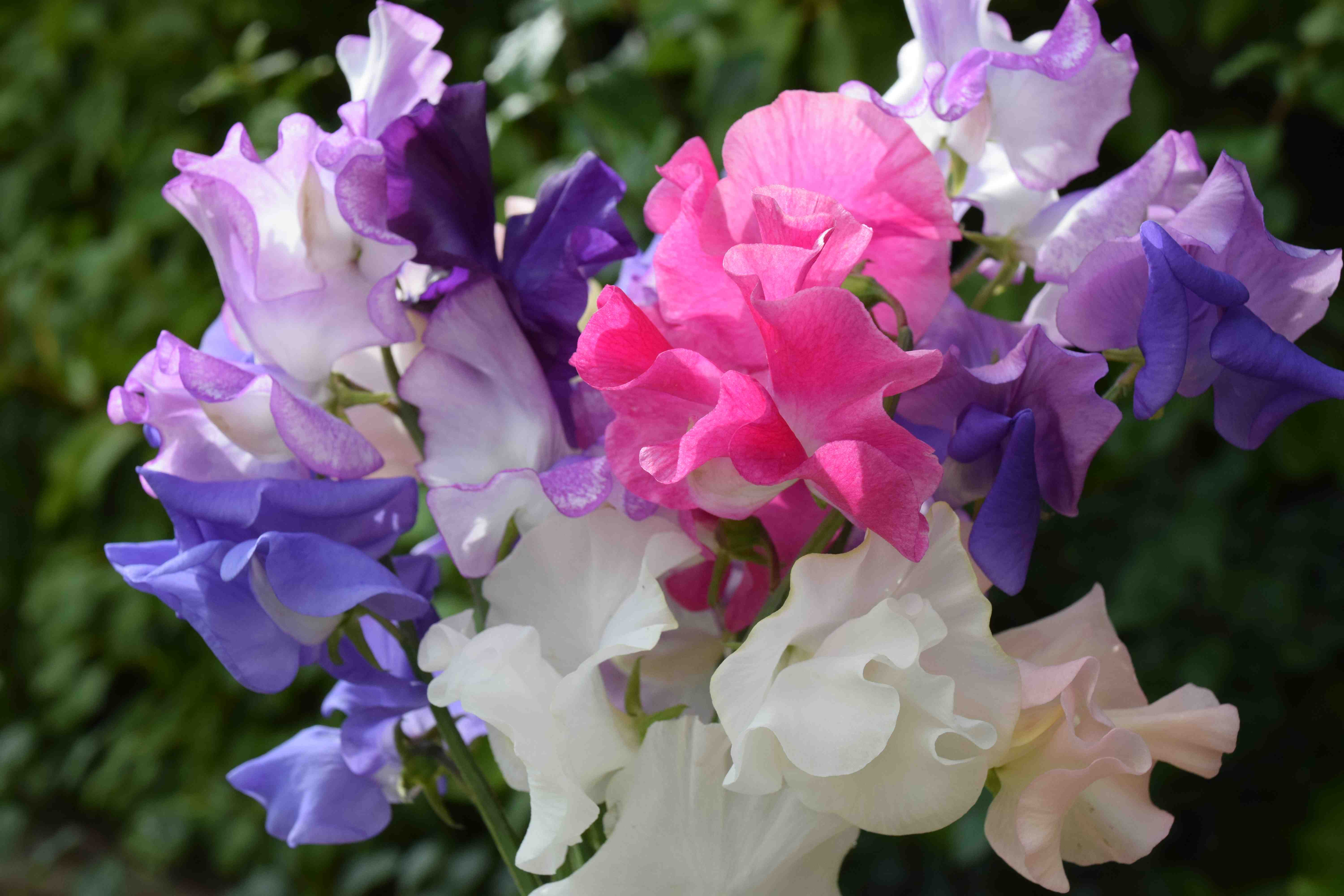
If you are like me, now that Christmas is cleared away I want to think about summer and the garden year ahead. It is never too early to plan and dream of our spring and summer gardens. But it can be too early to sow. While it is the perfect time to browse the rows of seeds and get together all you need for seed sowing, it is too early to sow most seeds.
If we sow too early it can be difficult to provide the heat and the light that the seedlings need in their early stages. The result can be poor germination and wasted money and effort, or straggly seedlings that never recover. Most seeds can wait till late February and March.
But many of us are understandably desperate to make a start on our summer and sweet peas are something we can sow now. Sweet peas are unusual because they are easy to grow but they are a challenge to grow well. Don’t let this put you off but approach it as a reason to do your best for them.
Let me explain the problem. If you take a 30cm pot and fill it with multipurpose compost and sow the seeds into the surface in March, they will grow. You will get a tangle of plants about 1m or so high and you will get flowers. You will have to water them and I hope you would feed them too but a month later the plants will be a mess. They will have stopped blooming and will probably be covered in mildew. A month later you will chuck them out and vow never to grow them again!
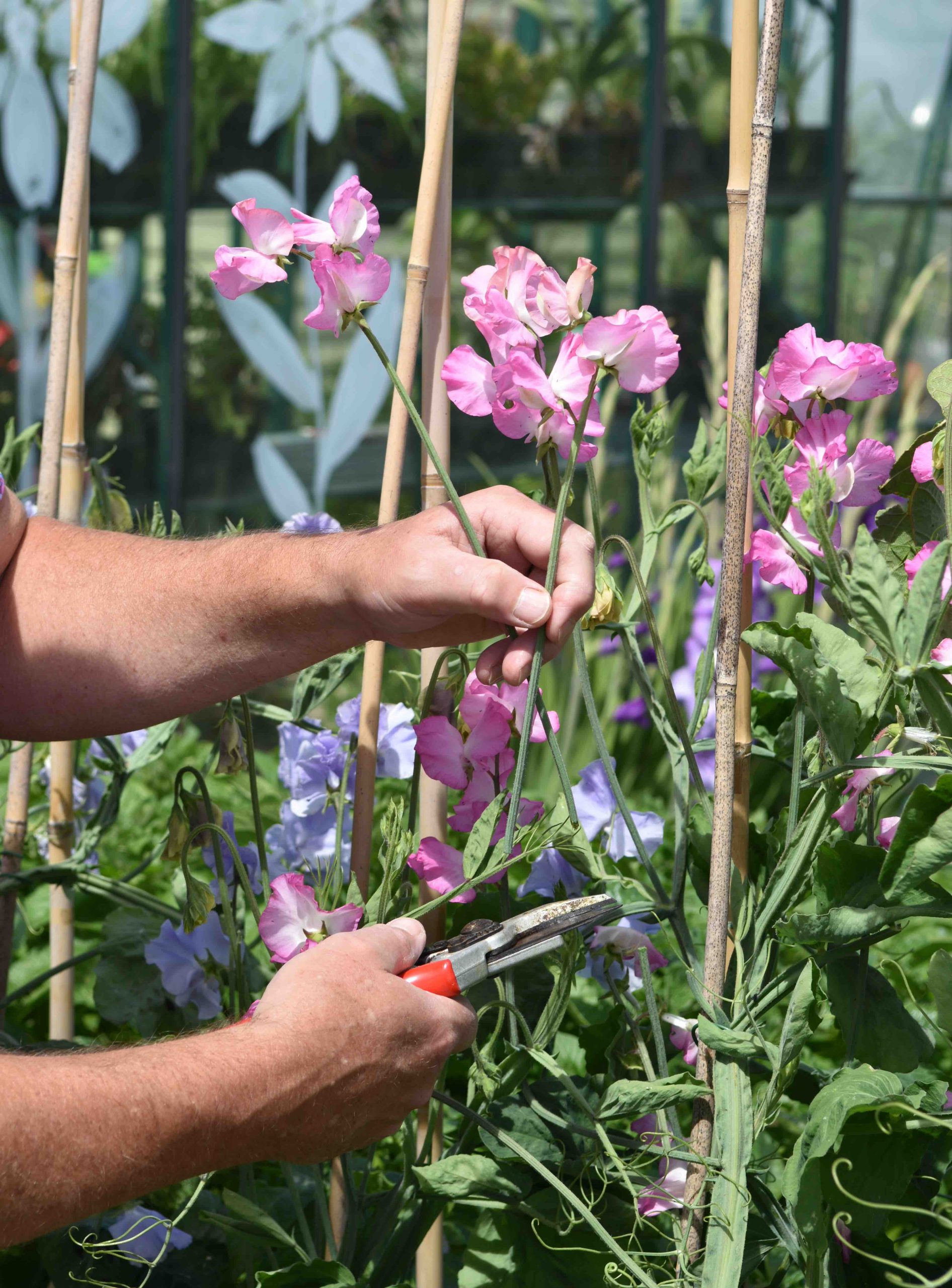
I hope you would want a longer and better display so here I am going to explain how to grow them better. This is the way I grow them so that I have long stems for cutting and so they bloom for many months. I will not go as far as exhibition growers, in this post, to avoid confusion. But if you follow these tips you could be winning prizes at the local show.
When to sow
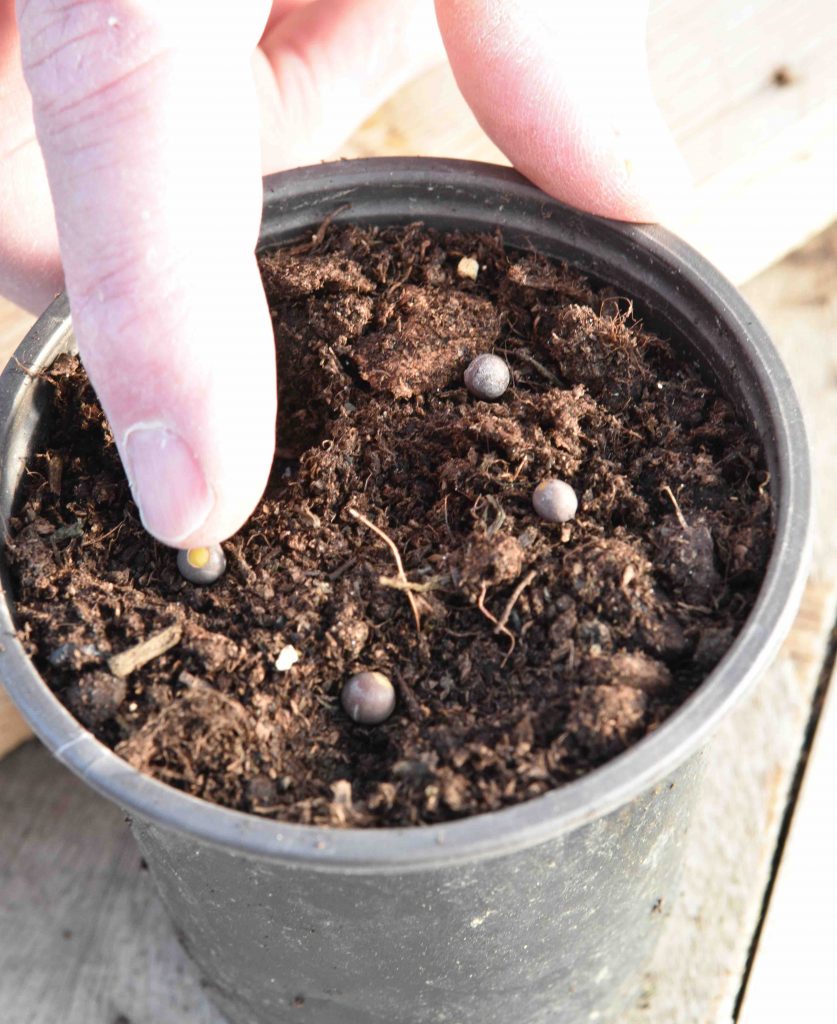
Like all plants, sweet peas do best if they have a good root system. If you sow in March or April, the plants start to grow and they bloom quickly. This means they quickly exhaust themselves. Sweet peas are hardy annuals, which means they only live for a year but they can tolerate frost. Serious growers sow them in October or November and keep them cool so they grow slowly. The aim is for them to germinate and develop slowly, making good roots, before planting out in March. But you can sow now too. They do not need high temperatures and anything around 10c (50f) is fine. So get sowing.
How to sow
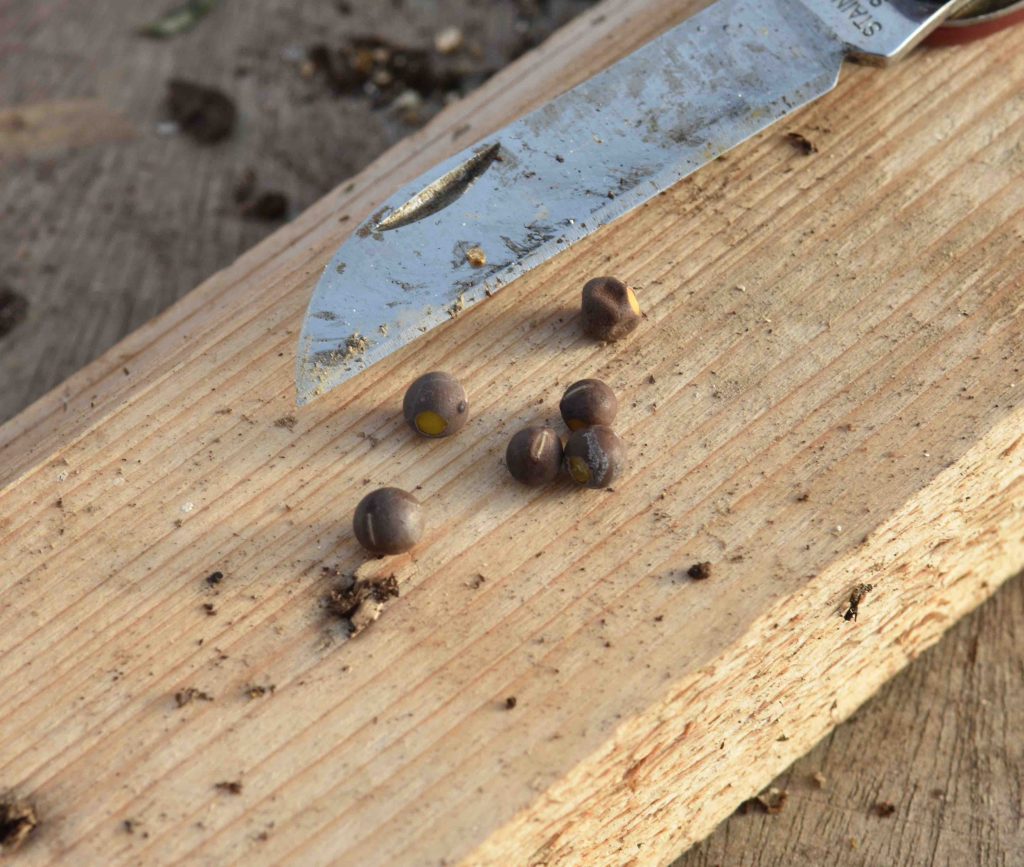
Some sweet peas have hard seed coats, especially some of the pink and blue flower colours which tend to have dark seed coats. Seeds with pale seed coats soak up water more quickly and germinate faster. It is often recommended to soak the seeds but this can be harmful. It is better to chip the seeds. It is fiddly but works. On the seeds you will see a ‘stripe’ where the seed was attached to the pod. Very carefully chip a piece of the seed coat on the opposite side to this, with a penknife. Alternatively you can rub the seed coat with sandpaper but I always end up removing more finger than seed coat so I always use a knife, but be careful. If you are worried then just sow the seeds as they are but germination will take a little longer. The problem is that, in a mix of colours, some will germinate more quickly than others. So don’t despair when only a few seedlings appear – more will come up in a few weeks.
If you want exhibition sweet peas you need to grow the plants up canes as single stems so you must sow the seeds singly, either in deep cell trays (often called Rootrainers) or small pots or toilet roll tubes. If you want some sweet peas for display then sow three or four seeds per small pot and you can plant them out as a small clump.
What to do next
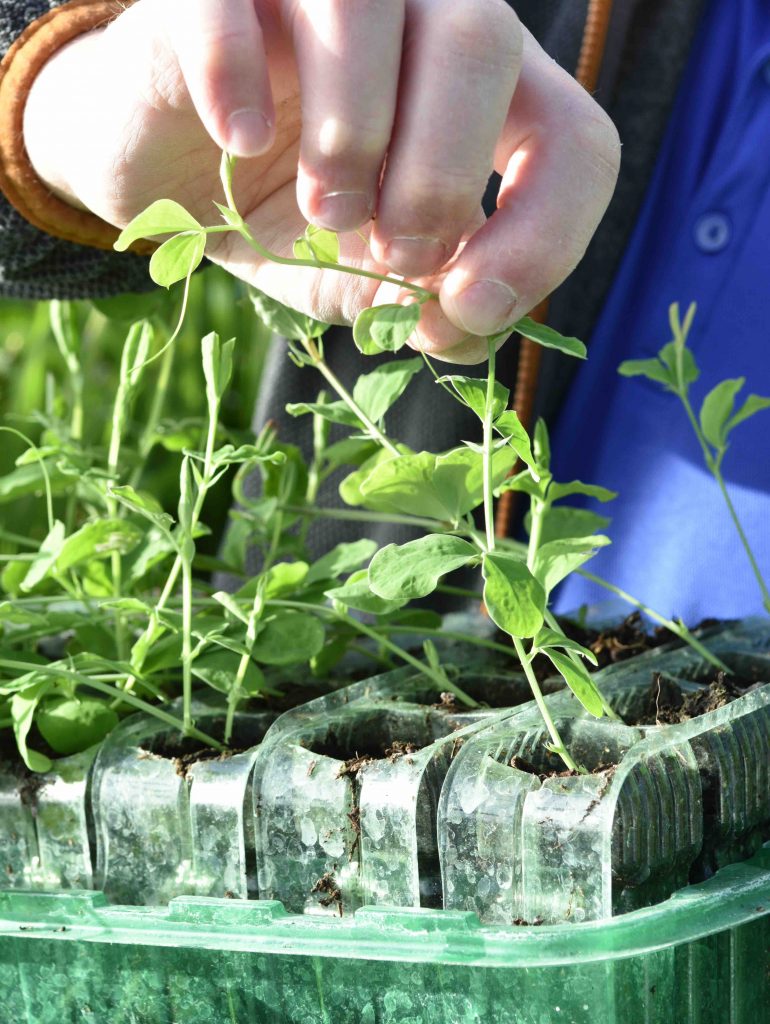
Once the seedlings have several leaves you need to pinch out the tips to leave about four leaves. This is because the main stem tends to grow weakly and you want to encourage strong sideshoots from the base. If growing these up canes as single stems then you will remove all but the strongest sideshoot. But for general growing you can leave all three sideshoots to grow.
Then you can plant them out in the ground in March. If you plant to grow them in containers remember that these are hungry plants so use a large and deep container. I would always add controlled-release fertiliser to the compost as well as apply liquid feeding. To be honest, sweet peas grow best in the ground but you can grow them in pots. I would recommend the old-fashioned ‘Grandiflora’ types for pot growing because they are less straggly. They have smaller flowers but their scent is the strongest so ideal for a patio pot.
Your seedlings do not need a lot of heat. But they need good light. A poly tunnel or cold greenhouse is fine. Don’t keep them in the house where it is too dark and warm. You can even leave them outside but be careful to protect them from snails. Mice will also dig up and eat the seedlings so make sure you tell the cat to watch for them.
And next?
It is a bit early to discuss flowering since we are just sowing the seeds, but it is important to know that sweet peas stop blooming when they set seeds so it is vital to pick again and again and to remove fading flowers. This will really extend the period of bloom.